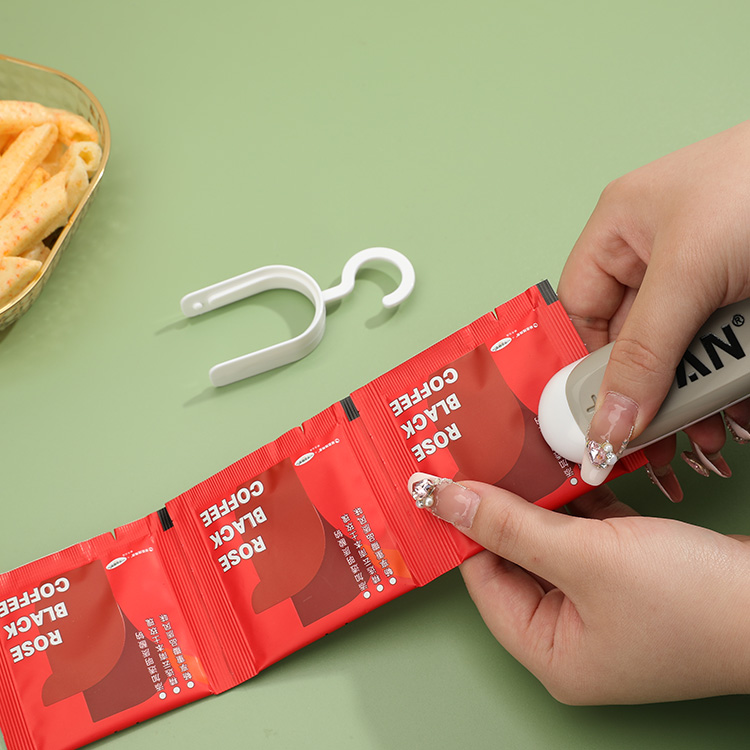2024/4/17 11:45:25
Bag sealers, also known as heat sealers or impulse sealers, are versatile tools used in various industries and applications for sealing plastic bags and pouches. From food packaging to pharmaceuticals, electronics, and beyond, bag sealers play a crucial role in ensuring the freshness, safety, and integrity of packaged goods. In this comprehensive guide, we’ll delve into the types of bag sealers, their uses across different industries, how they work, and factors to consider when choosing the right sealer for your needs.
Types of Bag Sealers

Bag sealers come in several types, each designed for specific applications and sealing requirements:
- Impulse Sealers: Impulse sealers use a heated element to seal thermoplastic bags by applying pressure and heat for a precise duration. They are commonly used for sealing polyethylene and polypropylene bags and are suitable for sealing bags with thicker materials.
- Constant Heat Sealers: Unlike impulse sealers, constant heat sealers maintain a constant temperature, making them ideal for sealing thicker materials such as cellophane, Mylar, and aluminum foil bags. They provide a stronger seal but may not be as energy-efficient as impulse sealers.
- Vacuum Sealers: Vacuum sealers remove air from bags before sealing, extending the shelf life of perishable foods by preventing oxidation and microbial growth. They are widely used in the food industry for packaging meats, cheeses, and other perishable goods.
- Band Sealers: Band sealers use continuous bands of heat to seal bags as they pass through the sealer. They are suitable for high-volume packaging operations and are commonly used in industries such as food, pharmaceuticals, and electronics.
- Foot Pedal Sealers: Foot pedal sealers are operated manually using a foot pedal, allowing the user to control the sealing process with their foot while keeping their hands free to handle the bags. They are often used for sealing large or heavy bags that require two hands to hold.
Uses Across Different Industries

Bag sealers find applications across a wide range of industries, including:
- Food Packaging: Bag sealers are extensively used in the food industry for packaging perishable goods such as fruits, vegetables, meats, and baked goods. Vacuum sealers are particularly popular for extending the shelf life of packaged foods.
- Pharmaceuticals: In the pharmaceutical industry, bag sealers are used to package medications, medical devices, and other healthcare products in a sterile and tamper-evident manner. Constant heat sealers are commonly used for sealing foil pouches and blister packs.
- Electronics: Bag sealers are used in the electronics industry for packaging components, cables, and other electronic devices to protect them from moisture, dust, and static electricity. Impulse sealers are often preferred for sealing anti-static bags.
- Retail and E-commerce: Bag sealers play a vital role in retail and e-commerce packaging, where they are used for sealing product packaging, poly mailers, and bubble wrap bags. They help ensure that products reach customers in good condition.
- Industrial and Manufacturing: Bag sealers are used in various industrial and manufacturing applications, including sealing chemical bags, bulk packaging, and product assembly. Band sealers are commonly used for sealing bags on production lines.
How Bag Sealers Work
The operation of a bag sealer depends on its type, but the basic principle involves heating and pressing together the open ends of a plastic bag to create a secure seal. Here’s a simplified overview of how impulse sealers, one of the most common types, work:
- Heating Element: The bag sealer contains a heating element, typically made of nichrome wire, which generates heat when electricity passes through it.
- Pressure Bar: When the operator activates the sealer, the sealing bar or pressure bar applies pressure to the bag, holding it in place against the heating element.
- Sealing Duration: The heating element is activated for a specific duration, known as the sealing time, which allows the plastic to melt and fuse together, creating a tight seal.
- Cooling Time: After the sealing time elapses, the heating element is turned off, and the sealed area is allowed to cool briefly to ensure the seal sets properly.
- Release Mechanism: Once the seal is formed, the pressure bar is lifted, and the sealed bag can be removed from the sealer.
Factors to Consider When Choosing a Bag Sealer

When selecting a bag sealer for your specific application, consider the following factors:
- Sealing Width: Choose a sealer with a sealing width that accommodates the size of your bags or pouches.
- Sealing Material: Ensure that the sealer is compatible with the type of material you’ll be sealing, whether it’s polyethylene, polypropylene, Mylar, or other specialty films.
- Sealing Thickness: Consider the thickness of the bags or pouches you’ll be sealing and choose a sealer with the appropriate sealing strength for your needs.
- Production Volume: Determine the volume of packaging you’ll be handling and choose a sealer that can accommodate your production requirements, whether it’s a manual, semi-automatic, or automatic sealer.
- Additional Features: Look for additional features such as adjustable sealing temperature, digital controls, and safety features to enhance the usability and efficiency of the sealer.
Conclusion

Bag sealers are indispensable tools in various industries for sealing plastic bags and pouches with precision and efficiency. Whether you’re packaging food, pharmaceuticals, electronics, or other products, choosing the right type of sealer for your application is essential for ensuring product quality, safety, and integrity. By understanding the different types of bag sealers, their uses across different industries, how they work, and factors to consider when choosing a sealer, you can make an informed decision and select the best sealer for your specific needs.

